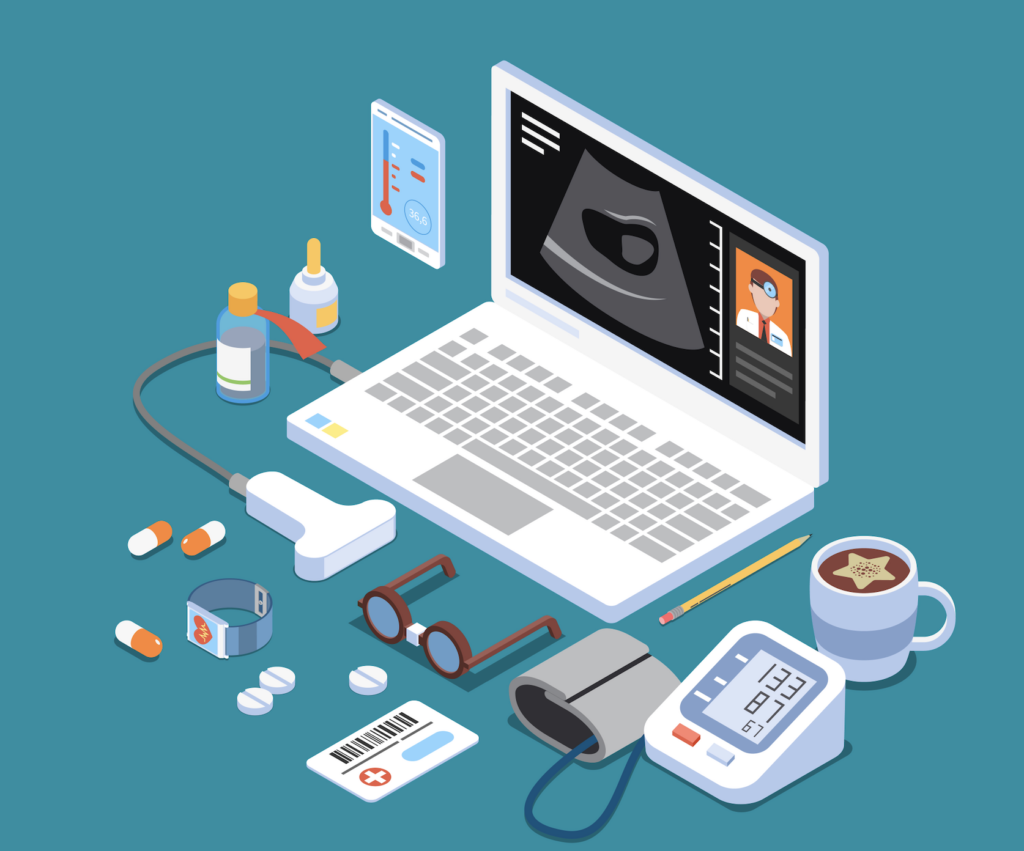The Internet of Things (IoT) has revolutionized various industries, and healthcare is no exception. Integrating IoT devices and technologies in healthcare has brought about a transformative change in patient monitoring and remote care.
This powerful combination can potentially:
- Enhance patient outcomes
- Improve access to care
- Increase efficiency in healthcare systems worldwide
In this blog, we will explore how IoT is revolutionizing healthcare by transforming patient monitoring and remote care.
- Enhanced Patient Monitoring
IoT devices play a crucial role in providing real-time and continuous patient monitoring. Wearable devices, such as smartwatches, fitness trackers, and biosensors, can collect a vast amount of patient data, including heart rate, blood pressure, glucose levels, and sleep patterns.
This data is transmitted to healthcare providers in real-time, enabling them to:
- Monitor patients remotely
- Detect abnormalities
- Intervene promptly
Consequently, healthcare professionals can provide personalized and proactive patient care, even from a distance.
- Remote Patient Care
IoT-enabled telehealth solutions have enabled healthcare providers to deliver high-quality patient care regardless of location.
Telemedicine platforms allow patients to:
- Connect with healthcare professionals through video calls
- Ensure timely consultations
- Reduce need for in-person visits
IoT devices, such as connected blood pressure monitors, glucose meters, and ECG monitors, enable patients to securely measure vital signs at home and transmit the data to healthcare providers, which saves time and resources and empowers patients to participate in their care actively.
- Early Detection and Prevention
IoT devices excel at early detection and prevention of medical conditions. IoT-powered applications can collect data on patients’ daily activities, sleep patterns, and exercise routines, allowing healthcare providers to identify patterns, detect deviations, and intervene proactively to prevent or manage chronic conditions.
- Streamlined Workflows and Efficiency
IoT integration streamlines healthcare workflows and enhances efficiency across the board. Connected medical devices and sensors,
- Automate data collection and transmission
- Reduce manual errors
- Reduce administrative burdens
This automation allows healthcare professionals to focus more on patient care and less on paperwork. Moreover, IoT-enabled inventory management systems track,
- Medical supplies
- Equipment
- Medication
- Ensuring their availability when needed
- Reducing waste
- Optimizing resource allocation
- Improved Patient Engagement and Adherence
Engaging patients and promoting adherence to treatment plans are critical for successful healthcare outcomes. IoT devices contribute significantly to this by providing patients with personalized data and insights.
For instance, patients can receive reminders and alerts through their smartphones or wearable devices to:
- Take medication
- Engage in physical activity
- Attend medical appointments
This real-time feedback and personalized guidance encourage patients to actively participate in their care, leading to better treatment outcomes and improved overall health.
Conclusion
The integration of IoT in healthcare is transforming patient monitoring and remote care, empowering both patients and healthcare providers.
IoT devices enable:
- Real-time patient monitoring
- Remote consultations
- Early detection of health issues
- Streamlined workflows
- Improved patient engagement
As the IoT advances, we can expect even more innovative solutions to emerge, revolutionizing healthcare delivery, improving patient outcomes, and making healthcare more accessible to all.

